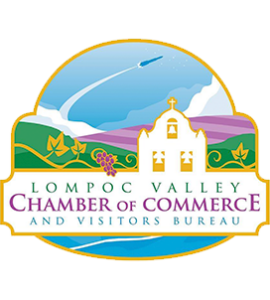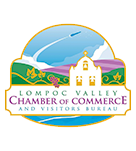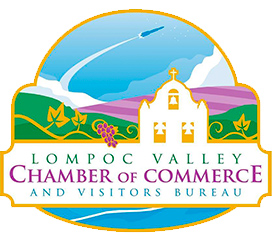Make Lompoc part of your next road trip!
Lompoc, California is Flower City, USA
The Lompoc Flower Fields are a popular tourist destination located in Lompoc, California, USA. The flower fields are known for their vibrant displays of colorful flowers, including lilies, stock, delphiniums, and sweet peas. The flowers are grown commercially by local farmers and are harvested for sale in local markets and for export.
The best time to visit the Lompoc Flower Fields is typically from mid-April to early June, when the flowers are in full bloom. During this time, visitors can take guided tours of the fields, purchase fresh-cut flowers, and take photographs.
In addition to the flower fields, Lompoc also has several other attractions worth visiting, including the La Purisima Mission State Historic Park, the Vandenberg Air Force Base, and the Lompoc Museum.
Visit the Explore Lompoc Flower Fields page
The Lompoc Flower Festival
The Lompoc Valley Flower Festival is held on the last full weekend in June. It begins on the Wednesday before that weekend and concludes on Sunday. A Lompoc tradition since 1952, the Flower Festival features a carnival, arts and crafts vendors, commercial vendors, live entertainment, food booths, a flower show and a parade on Saturday. The event is presented by the Lompoc Valley Festival Association. This annual festival attracts thousands of visitors to the Lompoc Valley for a weekend of family-oriented activities.
For more information regarding the Flower Festival, please contact:
Lompoc Valley Festival Association
(805) 735-8511
www.lompocvalleyfestivals.com
Lompoc Valley flower field map
Our Flower History
Climate is a critical factor in cultivating flower seeds and cut flowers. The Lompoc Valley is said to have the most consistent temperate climate in the world. The valley’s cool, moist summers have attracted growers of these colorful crops for almost 100 years.
The flower industry in the Lompoc Valley dates to the early 1900s when mustard was harvested for seed. Fragrant sweet peas, one of the valley’s first flower seed crops, were introduced for export to England.
The seeds grown in the Lompoc Valley were sold all over the world. However, due to changes in the consumer market, local seed production has all but vanished. Today, commercial growers plant and harvest cut flowers of many varieties. These cut flowers are used by nurseries and florists, and in dry arrangements in much of the Western United States.
The nearly seven acre floral flag of Lompoc was most recently planted in 2002 by Bodger Seed Company. The flag has not been replanted since this version, and Bodger has since been sold and ceased local operations, so it is unlikely that there will be another floral flag planted in the Lompoc Valley.
Flower Varieties
As you drive through the “Valley of Flowers,” you will see many patches of color which will include larkspur, stock, alyssum, delphinium, sweet peas, marigolds and others. Though it is true that fewer flowers have been planted in recent years, approximately 80% of US cut flower production comes from California, and over half of that comes from Santa Barbara County.
Please note that flower season runs from late May until mid August, peaking in late June. There may be isolated fields as late as October, but because crops are annually rotated, no guarantees can be made as to the location of the flower fields. This map is a general guide only.
Field Etiquette
We hope you enjoy the beauty of Lompoc’s flower and vegetable fields and appreciate the hard work it takes to produce each flower and vegetable. Many hours are required to protect the blossoms from contamination from insects, pests, other flowers and even humans.
This information supplied to you serves as a self-guided tour was prepared to allow maximum enjoyment with the minimum of inconvenience to visitors and growers. Please respect others’ property and follow these simple rules of flower and vegetable field etiquette:
- Please keep your vehicle on paved roads. Dust and dirt can harm flower growth
- You are welcome to stop to take photos, but if you do stop your vehicle, please leave enough room for others to pass
- Please do not pick the flowers or vegetables. They belong to the growers and represent their livelihood
- Please do not walk (or allow your pets to run) in the fields. Doing so destroys the rows.
Driving Route
The Lompoc Valley has two main roads running parallel, east and west. On the north side of the city is Central Avenue; on the south is Ocean Avenue.
The best way to view the flowers is to proceed west on Ocean to Floradale, then right on Floradale to Central, and continue going back and forth between Central and Ocean Avenue. Union Sugar Road is the last road through the fields before returning to town.
As you travel between Ocean and Central Avenues, you will be on rough farm roads with potholes. Also, you will cross railroad tracks which are bumpy. Come to a stop and cross gently or you could damage your vehicle.
There are sometimes flowers on Highway 246 and Purisima Road adjacent to La Purisima Mission.
Fruits & Vegetables
While your eyes enjoy the beauty of the flowers, also allow them to appreciate the beauty of the many vegetable crops, walnut orchards and vineyards that abound in the valley and surrounding area.
Many acres are planted to beans annually, the seeds of which are harvested and sold locally as well as shipped around the world. The Lompoc Valley remains renowned for its food production with crops including asparagus, broccoli, cauliflower, lettuce, artichokes, carrots, cabbage, celery, spinach, kale, parsley, Brussels sprouts, snap peas, cilantro and walnuts.
Lompoc Valley’s grapes were harvested for wine back in the 18th Century when the Mission was newly born. Today, Lompoc is one of the most celebrated wine production and tasting hubs in Santa Barbara County, producing award-winning wines. The Sta. Rita Hills AVA is located just east of Lompoc, renowned for growing Pinot Noir, Chardonnay and other cool climate grapes.
Discover Lompoc – select from the menu below:


